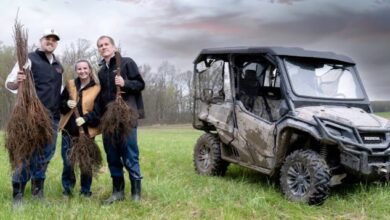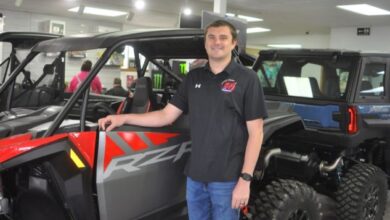BRP Continues to Make Changes
When Bombardier, Inc., the giant international manufacturing operation, spun off its recreational products business in December 2003, the move set in motion a series of reorganizations, cutbacks, relocations and asset sales.
Most recently, BRP announced in November that it planned to cut 800 jobs, 600 in Canada, 100 in the United States and 100 outside North America. Two hundred of the Canadian employees were offered early retirement and another 200 may be called back.
The company took the move because of the strengthening of the Canadian dollar against the U.S. dollar and increases in commodity prices. In the foreign exchange market, BRP has been severely affected by the weakening of the U.S. dollar against the Canadian dollar.
Two years ago, the Canadian dollar was worth about U.S. $1.50. Today, it’s worth about $1.18. That means that if BRP sells a $10,000 snowmobile in the United States, one containing many costs incurred in Canada, it receives only about $11,800. Two years ago, it would have received about $15,000. So, costs are increasing, but sales revenue from one of its major markets is decreasing when translated into Canadian dollars.
“Raw material prices keep going up,” says Pierre Pichette, BRP’s vice president of communications and public affairs. “That squeezes our margins. We decided to do it now (make the cutbacks) and get ready for the future.”
BRP reported revenues for the second quarter ended July 31, 2004, of $572.6 million, compared to $495.5 million for the same period the previous year. BRP said it earned $20.8 million from continuing operations during the second quarter, up from $3.6 million the previous year.
The company added a surcharge in June of U.S. $50 on every ATV, snowmobile and PWC to cover increasing material costs. No additional surcharges are planned for the moment, Pichette said. The company also increased the MSRP on certain models.
Pichette told Powersports Business that BRP expects increased sales in each of its powersports categories, ATV, snow and PWC in 2005. The company also operates a Marine Engines business that it acquired from Outboard Marine Corporation late in 2001. The marine business posted six-month revenues of $315.6 million, up $33.1 million from the previous year.
All figures are reported in Canadian dollars.
Pichette said that ATV unit sales for BRP are meeting projections for the year, and the company is developing its new business plan with John Deere. BRP makes ATVs for Deere and BRP dealers sell Deere utility machines.
On the PWC side, Pichette said Sea-Doo’s new models have been well received, especially the 3D and and the RXT, the three-passenger machine powered by the 215 hp Rotax 4-TEC engine and prospects are “looking good” for next year.
“There’s pent up demand because of the bad summer in the North and in the South,” says Pichette. “With a better summer next year,” he says, “people will be going back on the water.” Sea-Doo inventories were reduced slightly this year, Pichette said.
Ski-Doo’s Mach Z muscle sled, the mountain Summit series and the GTX three seater, all built on the REV platform, are expected to be good sellers, he said.
“All these (segments) are mature markets,” notes Pichette, “and growth will come on a company basis, rather than an industry basis. Weather is a big factor, and interest rates and oil prices are factors.”




